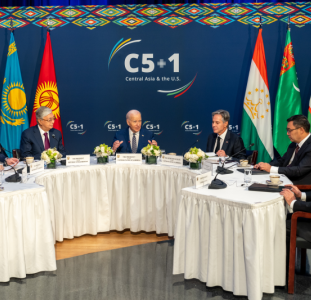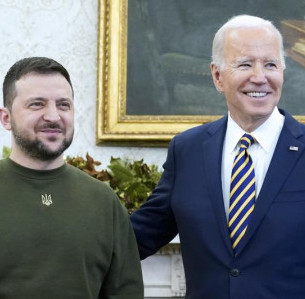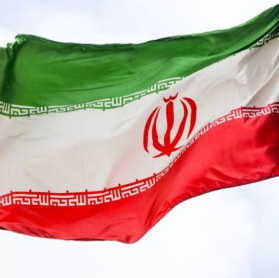Chinese Defense Minister Wei Fenghe and Indian Defense Minister Rajnath Singh have spoken in favor of constructive dialogue and expressed mutual desire to maintain peace and stability at the Sino-Indian border in the course of a Moscow meeting held last Friday between the heads of defense establishments of the CIS, CSTO and SCO countries.
"The two sides should make joint efforts to meet each other halfway, cool down the current situation as soon as possible and safeguard peace and tranquility in the China-India border areas," Xinhua news agency quotes Wei Fenghe as saying. According to the Chinese minister, Beijing hopes that the Indian side shows restraint and acts in compliance with the agreements reached between the two countries' leaders earlier.
In turn, Rajnath Singh pointed to India's interest in an early withdrawal of both countries' troops from the border area. He stressed that given the situation, it is vital to advance a peaceful dialogue both between the defense establishments and at the diplomatic level.
Back early last week, the Indian Defense Ministry said that on August 30-31, the country's troops prevented "provocative movements" by Chinese forces carried out "to change the status quo" along the line of effective control in Eastern Ladakh. Beijing flatly rejects the accusations. The August escalation at the Sino-Indian border is cold news. The situation escalated in early May, when clashes occurred involving about 250 soldiers, with over 100 people injured back then. In mid-June, there were new skirmishes between the military of the two countries, resulting in the death of 20 Indian soldiers and an unknown number of Chinese ones.
If we follow Beijing's official statements, for now China is not in the mood to pick a fight with New Delhi. At the same time, the Chinese authorities constantly repeat that they will not tolerate India's unpunished invasion of their territory. China emphasizes that India shouldn't bet on support from the United States. According to Chinese experts, Washington benefits from the conflict between Beijing and New Delhi to implement a strategy of containing China both in the Indo-Pacific region and throughout the world.
The recent situation at the Indian-Chinese border around the Union Territory of Ladakh has been really tense. It is no accident that on September 5, US President Donald Trump said Washington was ready to help resolve the conflict between India and China over territories in the Himalayas. At the same time, he warned that the situation was really grave, all the more serious many believe. By the way, this is not the first time Trump offers similar assistance, with Beijing refusing Washington's mediation.
At the same time, New Delhi discounts Russia's possible mediator role in resolving the border dispute between India and China. Russia was informed by the Indian side about the border situation, but no mediation was discussed, a source of The Hindustan Times newspaper close to the government said the other day.
Now the two most populous countries in the world – India and China, with their almost three billion people (37% of the world's total population) – are separated by a conventional boundary called the "McMahon Line". It is named after the Secretary of State for India, who proposed this border back in 1914. India and Tibet recognized this border, but China did not. Two sections of the border area remain disputed: in the north-eastern part of Kashmir and in the northern state of Arunachal Pradesh. The line of effective control runs just through the Ladakh region.
Border disputes between China and India have actually become a thorn in relations between Beijing and New Delhi. So far, separate skirmishes do not escalate into a serious armed conflict, as it happened in the fall of 1962. And this really makes for misery, as today both countries are nuclear powers. Apparently, India and China, while remaining geopolitical rivals in Asia, do not want to put the rapidly growing mutual economic ties on trial. Suffice it to say that China is the number one trading partner to India. Thus, in the 2018/19 financial year, the two countries' trade turnover amounted to $87 billion. That doesn't count China's trade with India carried on through Hong Kong. And over the current border conflict escalation, New Delhi was reported willing to reconsider approaches to cooperation with Beijing.
In 2018, Indian Prime Minister Narendra Modi visited China, and his talks with Chinese President Xi Jinping yielded an agreement on avoiding escalated border disputes. The agreement has not yet been translated into practice. Both sides believe they need no intermediaries, being able to resolve disputes between them without outside help. Moreover, both countries are members of authoritative international associations like BRICS and the Shanghai Cooperation Organization (SCO).
By the way, apart from the SCO defense ministers' meeting that took place on September 3-4 in Moscow, the Russian capital will host an encounter between the SCO foreign ministers on September 10. The Indian side will be represented by Subrahmanyam Jaishankar, and the Chinese side – by his counterpart Wang Yi.
In the present context, maintaining the existing formats of interaction will be quite an achievement for the SCO, given that engagement in a constant confrontation is beneficial for neither India nor China that must return to cooperation sooner or later. As for Moscow, it should help set up delicate negotiating mechanisms within the SCO so that border incidents between its members (India and China in the present case) entail no potentially calamitous conflicts.









